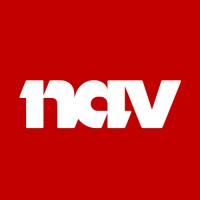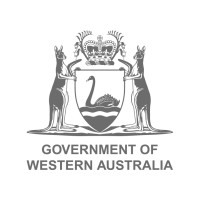Company Cyber Security Posture
NANA
NA Company Details
NA
NA
NA
NA
NA
NA
Scan still pending
NA
NA
Between 200 and 800
This score is AI-generated and less favored by cyber insurers, who prefer the TPRM score.
 NA Global Score
NA Global Score.png)

Company Scoring based on AI Models
| Model Name | Date | Description | Current Score Difference | Score |
|---|---|---|---|---|
| AVERAGE-Industry | 03-12-2025 | This score represents the average cybersecurity rating of companies already scanned within the same industry. It provides a benchmark to compare an individual company's security posture against its industry peers. | N/A | Between 200 and 800 |
Company Cyber Security News & History
| Entity | Type | Severity | Impact | Seen | Url ID | Details | View |
|---|
Company Subsidiaries

NA
Access Data Using Our API

Get company history
.png)
NA Cyber Security News
Trump AI plan calls for cybersecurity assessments, threat info-sharing
The U.S. government will expand information sharing, cyber risk evaluations and guidance to the private sector to address the cybersecurity ...
Introducing the smarter, more sophisticated Malwarebytes Trusted Advisor, your cybersecurity personal assistant
Malwarebytes Trusted Advisor has had an update, and it's now sharper, smarter, and more helpful than ever.
Bad Break In CIBR Led To Our Exit And The Skip Of A New Entry
A bad break in cybersecurity stocks led to our exit, even before knowing the reason for it. It also led to us skipping the next setup.
Agreement for critical CISA cyber threat analysis work expires
CISA says it's reviewing an agreement with Lawrence Livermore National Laboratory that involves the lab analyzing "CyberSentry" threat data.
Outtake’s agents resolve cybersecurity attacks in hours with OpenAI
Outtake's cybersecurity agents automate detection and remediation with speed and precision enterprise security teams can trust.
Cyber Career Opps: Weighing Certifications vs. Degrees
Longtime CISO Melina Scotto joins Dark Reading to discuss career advice gleaned from her 30 years in the cyber industry.
3 Top Cybersecurity Stocks to Buy Now
These cybersecurity stocks can benefit significantly from the increase in threats.
Cybersecurity firm 360 backs Huawei chips despite return of Nvidia
Qihoo 360 founder says the US-sanctioned firm will support domestic chips as 'the more they are used, the more they will improve'.
The role of the cybersecurity PM in incident-driven development
From PowerShell abuse to USB data theft, modern threats hit fast—and hard.vSee how security-minded PMs are responding with real-time ...

NA Similar Companies

Sécurité sociale
Système de protection universel auquel chacun contribue à la hauteur de ses moyens, la Sécurité sociale accompagne et protège nos concitoyens dans tous les moments de leur vie. La Sécurité sociale se compose de cinq grandes branches : - les Allocations familiales, aident la population française da

Belastingdienst
De organisatie bestaat uit diverse onderdelen, waaronder de Belastingdienst, Douane, Toeslagen, FIOD en enkele facilitaire organisaties. Met ruim 30.000 medewerkers werken we in kantoren die verspreid zijn over het hele land. Gezamenlijk heffen, innen en controleren we belastingen. Daarnaast zorgen

Correios
Empresa Brasileira de Correios e Telégrafos foi criada como empresa em 1969 por decreto lei. Hoje conta com mais de 100.000 empregados, tem presença em todos os municípios do Brasil. NEGÓCIO: Soluções que aproximam. MISSÃO: Fornecer soluções acessíveis e confiáveis para conectar pessoas, institu

Nav
Nav er en viktig del av sikkerhetsnettet i velferdsstaten. Vi skal bidra til at flere kommer i arbeid og færre går på stønad, og samtidig sørge for at de som trenger det er sikra inntekt og økonomisk trygghet gjennom rett pengestøtte til rett tid. For å løse dette samfunnsoppdraget forvalter Nav om

Federal Capital Territory Administration
The Federal Capital Territory Administration was created on December 31, 2004 following the scrapping of the Ministry of the Federal Capital Territory (MFCT). Seven new Mandate Secretariats were created for Education, Transport, Agriculture and Rural Development, Health and Human Services, Social d

Government of Western Australia
Welcome to the official WA Government page where you can stay up to date on the latest information about Western Australia and WA government initiatives. Questions relating to a specific activity within the WA Government should be referred to the relevant Department or Minister’s Office for a re

Frequently Asked Questions
Explore insights on cybersecurity incidents, risk posture, and Rankiteo's assessments.
NA CyberSecurity History Information
How many cyber incidents has NA faced?
Total Incidents: According to Rankiteo, NA has faced 0 incidents in the past.
What types of cybersecurity incidents have occurred at NA?
Incident Types: The types of cybersecurity incidents that have occurred include .
Additional Questions
What Do We Measure?
















Every week, Rankiteo analyzes billions of signals to give organizations a sharper, faster view of emerging risks. With deeper, more actionable intelligence at their fingertips, security teams can outpace threat actors, respond instantly to Zero-Day attacks, and dramatically shrink their risk exposure window.
These are some of the factors we use to calculate the overall score:
Identify exposed access points, detect misconfigured SSL certificates, and uncover vulnerabilities across the network infrastructure.
Gain visibility into the software components used within an organization to detect vulnerabilities, manage risk, and ensure supply chain security.
Monitor and manage all IT assets and their configurations to ensure accurate, real-time visibility across the company's technology environment.
Leverage real-time insights on active threats, malware campaigns, and emerging vulnerabilities to proactively defend against evolving cyberattacks.




